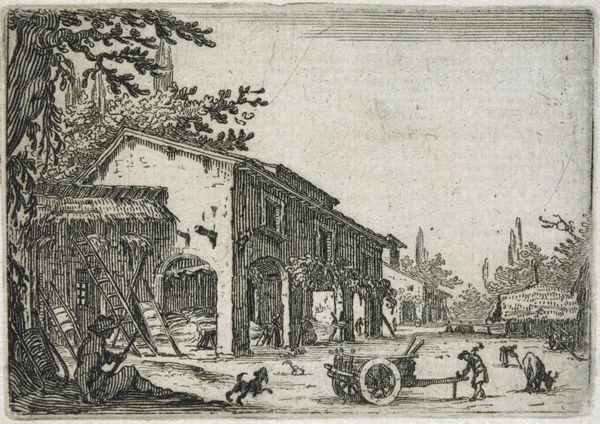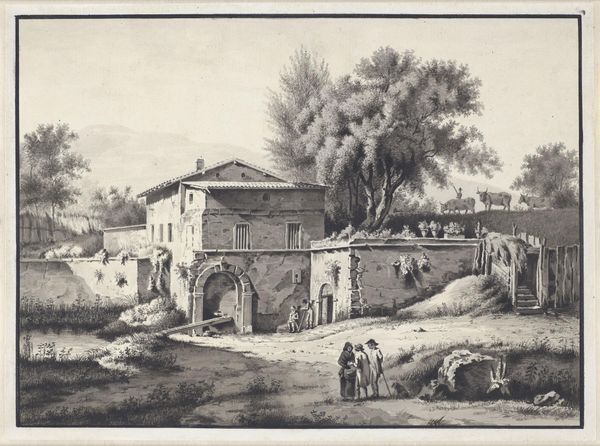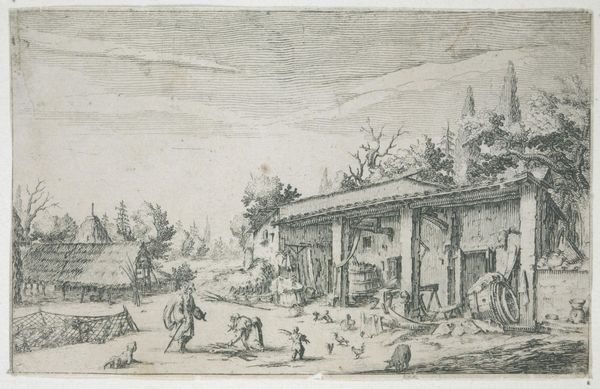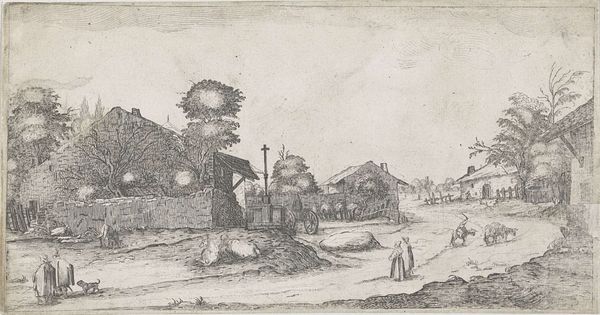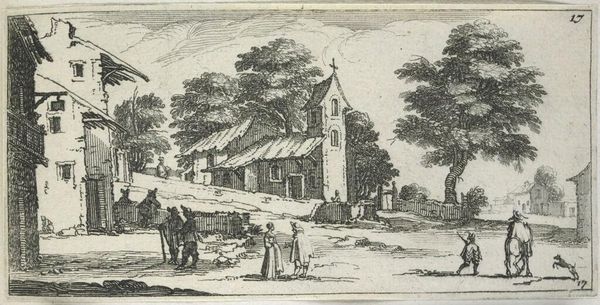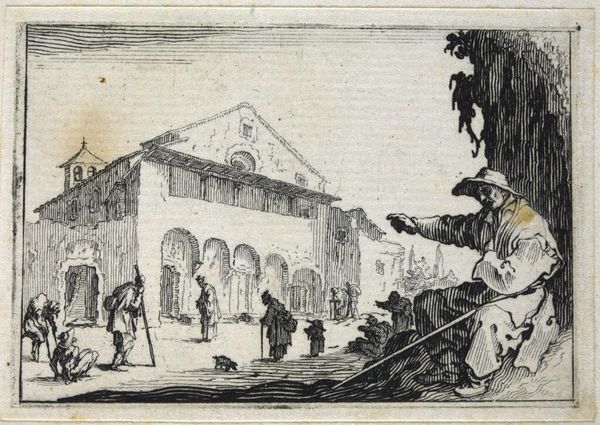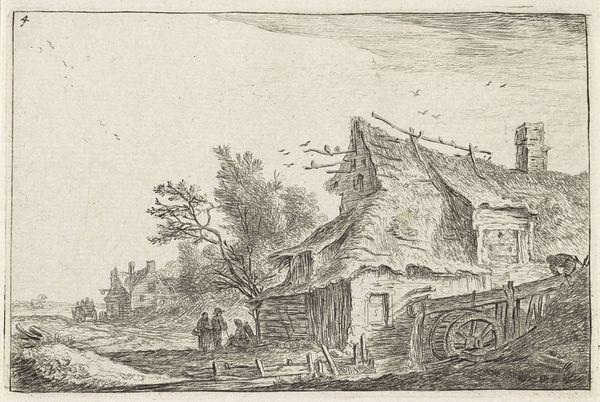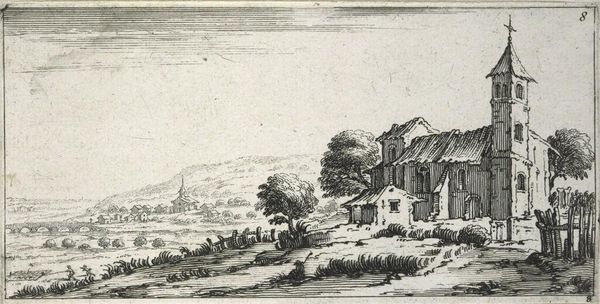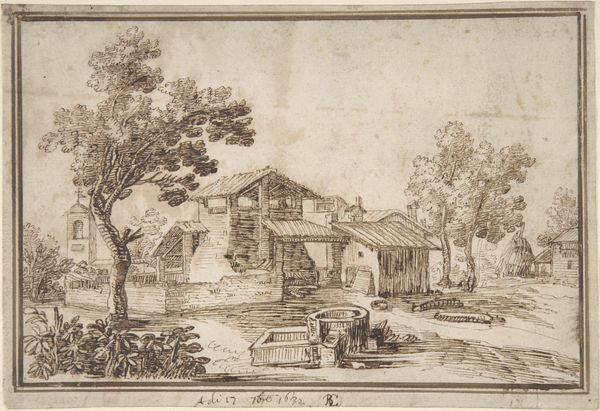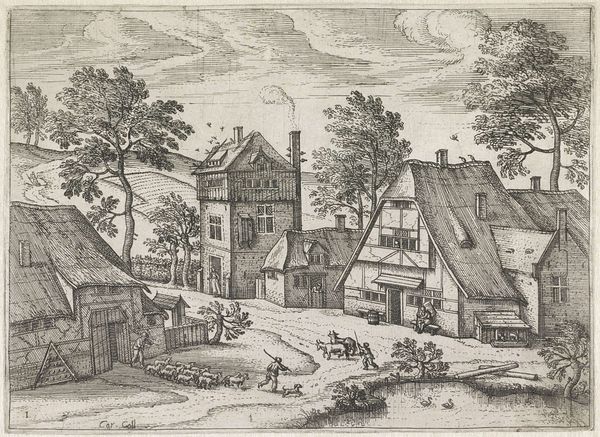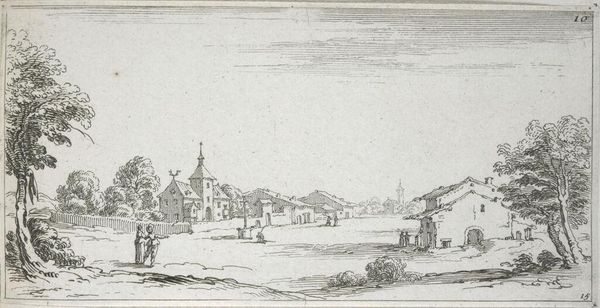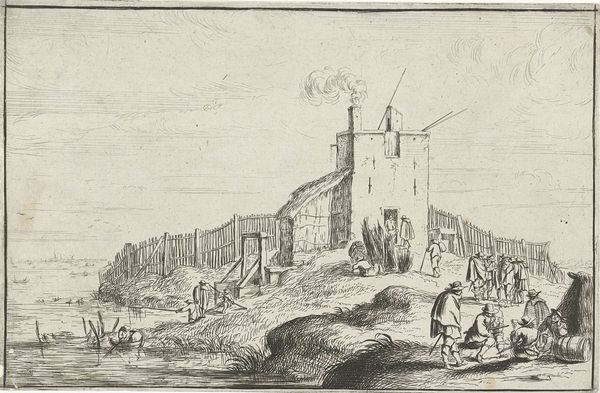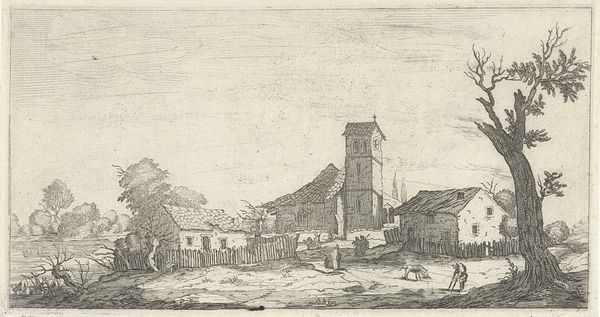
Dimensions: 5.6 x 7.5 cm (2 3/16 x 2 15/16 in.)
Copyright: CC0 1.0
Curator: Jacques Callot, born in Nancy, gives us this fascinating glimpse into rural life with his etching, "Italian Farm." It’s small, only about 5 by 7 centimeters. Editor: The intricacy is astounding for such a tiny artwork! It's a bustling scene, but something about the stark lines makes it feel a bit austere, doesn't it? Curator: Indeed. Callot’s work often reflects the social realities of his time. Farms, especially in Italy, represented the economic base, but also the exploitation of labor. We see the figures engaged in labor-intensive work. Editor: The very materiality of the etching emphasizes its own historical context: the lines almost feel like the furrows in a field, scored into the earth. And is that a solider resting in the bottom corner, perhaps alluding to the military conflicts shaping Italian society at the time? Curator: Possibly. The dog and the resting man, juxtaposed with the working figures, introduce elements of leisure and perhaps even tension into the scene. It's more than just a pastoral view. Editor: Callot presents the farm not just as a site of production but a complex tapestry of class, labor, and power, reminding us that even seemingly idyllic scenes are embedded within larger socio-political structures. It gives me so much to think about.
Comments
No comments
Be the first to comment and join the conversation on the ultimate creative platform.
